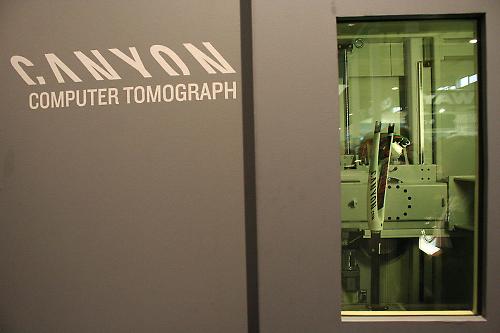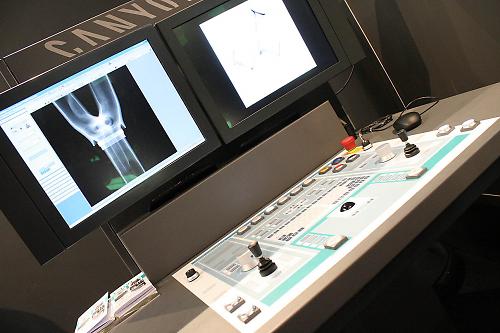- News
- Reviews
- Bikes
- Accessories
- Accessories - misc
- Computer mounts
- Bags
- Bar ends
- Bike bags & cases
- Bottle cages
- Bottles
- Cameras
- Car racks
- Child seats
- Computers
- Glasses
- GPS units
- Helmets
- Lights - front
- Lights - rear
- Lights - sets
- Locks
- Mirrors
- Mudguards
- Racks
- Pumps & CO2 inflators
- Puncture kits
- Reflectives
- Smart watches
- Stands and racks
- Trailers
- Clothing
- Components
- Bar tape & grips
- Bottom brackets
- Brake & gear cables
- Brake & STI levers
- Brake pads & spares
- Brakes
- Cassettes & freewheels
- Chains
- Chainsets & chainrings
- Derailleurs - front
- Derailleurs - rear
- Forks
- Gear levers & shifters
- Groupsets
- Handlebars & extensions
- Headsets
- Hubs
- Inner tubes
- Pedals
- Quick releases & skewers
- Saddles
- Seatposts
- Stems
- Wheels
- Tyres
- Health, fitness and nutrition
- Tools and workshop
- Miscellaneous
- Cross country mountain bikes
- Tubeless valves
- Buyers Guides
- Features
- Forum
- Recommends
- Podcast
news
Video: Take a look inside a Canyon
So how do you tell if the top end carbon frame is as good on the inside as it looks from the outside without cutting it in half, which rather spoils the frame? The answer, for Canyon at least, is a CT (Computed Tomography) scanning machine which they're now using in both development and quality assurance. At about £300,000 it's not a cheap bit of kit but it gives Canyon a non-destructive way to look inside their frames and forks to see what's really going on.
"We're pretty sure we're the only company in the bike industry using a CT scanner," they told us at the show. "It's a level of technology that's only really been used in medical and research facilities up to now. It's helped us produce a new carbon frame, which in the medium size is 790g, that we're confident we can make consistently in high volumes without taking any risks at all with rider safety."
Computed Tomography, is a large number of individual X-rays computed together into a three-dimensional visualisation of an object. The process allows hollow objects to be very accurately mapped, so it's ideal for bike frames and forks. "CT is the only way you can really tell what's going on inside composites with any degree of accuracy, without cutting a component up and physically looking inside," they said of the process. "We're using our CT scanner both in the design process and also as a quality assurance tool. As of now, 100% of Canyon's carbon fibre forks are X-rayed before they're sent out. That's to ensure quality and to make sure manufacturing tolerances are met. If a fork breaks it can have a pretty significant impact on the rider. This isn't about wanting to avoid a lawsuit, it's about peace of mind for both Canyon's owners and the people that ride their bikes."

A full CT scan of a fork would be made up of over a thousand separate X-rays; that process takes around 15 minutes, and computing and analysis time needs to be added to that. That's too big a job to undertake for every production fork, so at the moment Canyon are using the CT scanner to take a series of six X-ray images of different views of each fork to check for voids, cracks and uneven wall thicknesses. A fork scan takes about three minutes and all the X-ray images are stored for reference.

Canyon are also using the scanner as part of the development process for new products. CT allows you to check the manufacturing process against the CAD files of a product to make sure that the factory is making the thing you've designed. Using the CT image and the CAD image overlaid allows the Canyon engineers to check where the actual product differs from the specification. "Everywhere you see the CAD drawing, there's not quite enough material, and if you see the CT scan then the physical thing is slightly bigger. What you really want is a mix of the two, where they match perfectly. It's very small tolerances, and with such a complex shape to measure this is the only way of really knowing how well the finished product matches up to the design.
"Where you have two bladders that join, if one of the bladders infates too quickly you can get a big wrinkle; that's extra material for a start and it's impossible to know how it's going to affect the structure. Also, if you have extra material somewhere then it's missing somewhere else. You put in so much and it needs to be in the right places. CT allows us to check that the manufacturing process is as accurate as it can be.
"It's also useful in the testing stage. Say you get your carbon frame and you pass the EN tests and our own standard that goes above that. You don't actually know if the frame is okay, it might be just one load cycle away from failing. If you can take a detailed look at the material inside you can decide that you're not happy with things, even if the frame has passed. We have so much more information available thanks to this process."
Dave is a founding father of road.cc, having previously worked on Cycling Plus and What Mountain Bike magazines back in the day. He also writes about e-bikes for our sister publication ebiketips. He's won three mountain bike bog snorkelling World Championships, and races at the back of the third cats.
Latest Comments
- whosatthewheel 6 min 24 sec ago
Advanced bollocks.
- David9694 1 hour 29 min ago
Businesses still seeing ‘drop in footfall’ at St Stephens Place...
- David9694 1 hour 51 min ago
Young driver reported after flipping car in Wiltshire high street...
- shaunyboytellem 1 hour 53 min ago
Horrible pass but zebra crossings with an island should be treated as 2 separate crossings so no issue with the car not stopping there.
- Bigtwin 2 hours 1 min ago
Councils. Utter ficktards the nation over.
- David9694 2 hours 6 min ago
Driver crashes car into school gates in Cambridge...
- Bigtwin 2 hours 6 min ago
Just because you can...
- Bigtwin 2 hours 7 min ago
Dear God - what's happening to this sport?
- bigfatron 3 hours 45 min ago
My dad worked in advertising through the 60s and 70s and very much liked Alan Coren, thought he was great company, even when drunk. My dad's son...







Add new comment
17 comments
I can't get a CT scan for my patients when I want one, and yet they're putting bleeding bikes through them??!?
(And for what it is worth, ct results are available virtually immediately when there is an urgent problem...)
Think you might have trouble fitting a bike frame in a Spiral CT scanner… and they might be able to image a whole body in under a minute but in my experience you are going to be waiting a whole lot longer than that for the results.
Must be a pretty old / cheap CT scanner. Most modern medical spiral CT scanners can image an entire human head and neck in well under a minute.
They are not using the machine for a full CT scan for every fork. They are using it as an X-ray machine which is not all that new, unique or interesting.
Quote:"A full CT scan of a fork would be made up of over a thousand separate X-rays; that process takes around 15 minutes, and computing and analysis time needs to be added to that. That's too big a job to undertake for every production fork, so at the moment Canyon are using the CT scanner to take a series of six X-ray images of different views of each fork to check for voids, cracks and uneven wall thicknesses."
they're using it as a full CT scanner in the development process though, which is unique (so far as we're aware) and interesting. they're also x-raying each and every production fork and storing the images for reference, which is (so far as we're aware) also unique.
Factories in China have been X-raying forks (at least) for about 5 years now. CT scan goes a fair bit further, but it is disingenuous of Canyon to make it seem like they drove this process or are innovating.
Another way to avoid voids and bad products is to pay more. Use better materials, more expensive manufacturing technology, request better staff and supervision and your quality goes up, but so does the cost of inventory. I guess spending GBP300k once is more cost effective and it has more marketing value.
EDIT: ...and I am confused, how is CT scanning a fork or a frame once you dedicate the 15 minutes for the scan and several hours for analysis superior to cutting the part open and looking at the actual layup structure using any number of physical tools. We are not talking about aircraft wings or some other massively expensive parts that you would not want to destroy just so that you can have a peek inside...
Its non-destructive - they're doing it to every fork they manufacture, not just samples.
As to the weight of a wrinkle, yes it will be small but as the article says the material in this wrinkle is missing from somewhere else. Also a localised increase in thickness could act as a stress riser on the area nearby and actually negatively impact the forks strength.
well, for a start you can directly overlay the actual frame you've produced with the CAD design you've done finite element analysis on to see how the two measure up. also, you can look at the bits you'd destroy if you cut the component. also, you can look inside the carbon layup to see voids that you wouldn't see by checking the inside surfaces.
Spot on Tony.
I'm off for a ct scan next week. Think I'll take my new cannondale supersix along with me and see if they'll put that through at the same time
are Canyon's frames made in the Far East or Germany? anyone know?
They're made in the Far East and assembled in Germany, so the best of both worlds. In theory at least
How much extra wright would a wrinkle in a fork weigh - as much as a gram perhaps? Still better to lose the weight yourself and buy something classy in steel or titanium IMO. The two words I always associate with carbon on a dangerous descent are 'catastrophic failure'.
Just a damn shame they decided to change the sizing on their Ultimate CF SLX to S, M, L etc. Much better sizing in 2cm increments imo ......
Certainly agree on that! Size can be a selling point when faced with a borderline decision, Ie, small/Medium or maybe your on the cusp of Medium/Large.
Giant Bikes do the same thing for sizing ... I prefer to have sizes in every 2cm, increments.
I Ride a Cube Agree GTC Pro, another German manufacturer like Canyon.
Without the ability to inspect a component at this level the other manufacturers simply build in a bigger margin for failure. More weight.
Interesting stuff - presumably Canyon can do this (buy a 300k computer) due to selling a fair volume of products. Given the gaps in QC using conventional processes though, how can other manufacturers justify the high prices? Do Storck, for example, or Cervelo, merely cut into a greater percentage of frames for quality checks? That's still no guarantee that the one YOU buy is as good as they claim. Or is this mere marketing?